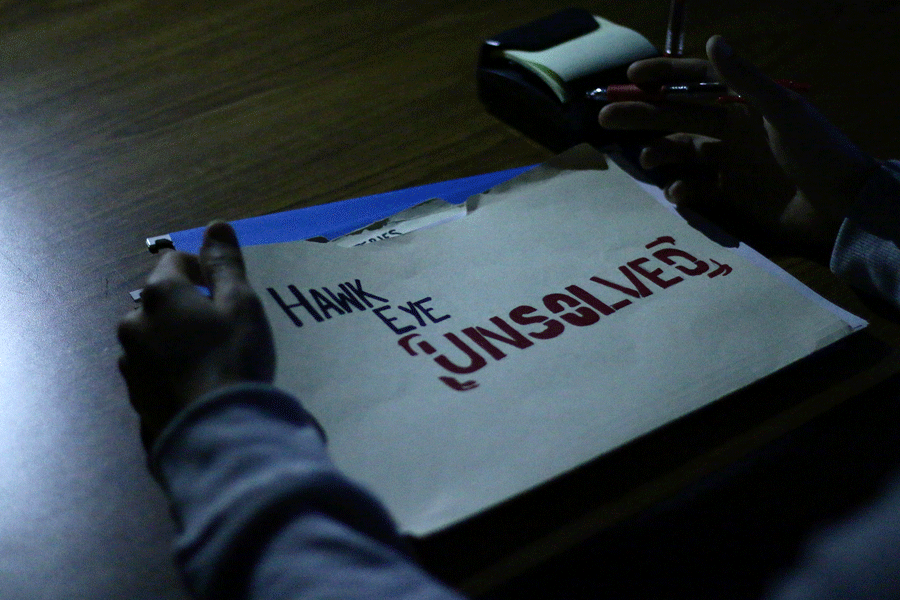The Black Dahlia
Jan. 15, 1947, resident Betty Bersinger of Leimert Park, Los Angeles, was walking with her three-year-old daughter when the two stumbled upon the body of Elizabeth Short that had been severed in two pieces on a vacant lot.
Short was only 22 years old when she was murdered. Her body was severed at the waist, her body completely drained of blood. Short’s body was so pale, that Bersinger believed her to be a mannequin at first, but when she realized the body didn’t belong to a mannequin, she quickly contacted the police.
Short was born and lived in Massachusetts, Boston and later lived in Florida for most of her childhood. She lived with her mother, Phoebe Short, father and four sisters. Elizabeth’s father built miniature golf courses for a living, that was until the 1929 stock market crash, where most of the family’s savings had been lost. The family was broke and in 1930, Elizabeth’s father had gone missing and his car was soon found abandoned near the Charleston Bridge. It was assumed that he had committed suicide.
Although, 12 years later, in 1942, Elizabeth’s mother, Phoebe Short, received a letter from her husband who she believed to be dead. The letter stated that he was in fact alive, and had moved to Vallejo, California to start a new life. When Elizabeth turned 18, she decided to move to Vallejo and live with her father. Elizabeth was said to be an aspiring actress, even though she had no acting experience. A year later, Elizabeth would move out of her father’s home due to various arguments. The last six months of her life, Elizabeth worked as a waitress in South California and rented a room on Hollywood Boulevard.
Elizabeth got the nickname “Black Dahlia” due to a movie that came out called the “Blue Dahlia,” which had also been about a murder of a girl around the same age as Elizabeth. Six days after the murder, someone claiming to be Elizabeth’s killer made a phone call to the editor of the Los Angeles Examiner, James Richardson. Three days after that, a letter was discovered by a U.S Postal Service worker. Words from newspapers and magazines had been cut out and pasted to form the sentence “Here is Dahlia’s belongings, letter to follow.” Inside the envelope was Elizabeth’s birth certificate, business cards, photographs and an address book. The contents and the envelope itself were wiped clean with gasoline, most likely because the killer did not want his identity to remain on the envelope.
On Jan. 26, another letter was sent to The Examiner. Unlike the other letter, this one was handwritten. The letter said “Here it is. Turning in Wed., Jan. 29, 10 a.m. Had my fun at police. Black Dahlia Avenger.” A location was also stated in the letter, where the supposed killer would turn himself in. The police arrived at the location, waiting for the alleged killer to appear, but no one came. At 1 p.m., The Examiner received yet another cut and paste letter, reading “Have changed my mind. You would not give me a square deal. Dahlia killing was justified.”
With all this evidence flooding into authority hands, there was no solid evidence to pinpoint the murder on one person.
With that, let me get into the suspects.
First we have Mark Hansen, a nightclub and theatre owner. Hansen was one of the last people to talk to Elizabeth before the night of her disappearance. While it isn’t known what was said during the phone call between the two, LAPD claimed his statements were contradictory. Elizabeth had been allowed to live with Hansen while she was staying in Los Angeles, his girlfriend, Ann Toth, lived with Short in the same room.
However, I do not believe that Hansen was the killer due to a lack of evidence. Also, I believe he is mainly on the suspect list because he was one of the last people to talk to Elizabeth.
Next we have the last person to see Dahlia alive, Robert M. “Red” Manley. The night of Jan. 8, Manley had picked Elizabeth up from San Diego. Reportedly, the two went out for drinks at the Cecil Hotel before her disappearance. At some point, Manley was actually ruled out as a suspect because he had passed two lie detector tests. Though, he was put back on the suspect list because the lie detectors were not very advanced and didn’t exactly prove much.
I don’t believe Manley killed Elizabeth. After Elizabeth’s death, Manley went through a lot of problems. He was institutionalized and was messed up after her death, most likely because of a connection they had or his guilt ate him alive for leaving her alone.
The final suspect I have is George Hodel, and this man has to be Elizabeth’s assassin. The amount of evidence that prove he is the murderer is ridiculous.
George’s name came up as a suspect in 1945 after the death of his secretary by a drug overdose. George was suspicious due to his medical degree. The state of Elizabeth’s body showed that whoever bisected her body had to have some sort of medical degree and surgical skill. In 1950, George became the prime suspect of Elizabeth’s murder; eventually his house would be bugged by authorities and he was heard saying “Supposin’ I did kill the Black Dahlia, they can’t prove it now. They can’t talk to my secretary anymore because she’s dead. They thought there was something fishy. Anyway, now they may have figured it out. Killed her. Maybe I did kill my secretary.” This is obviously suspicious and proves he cannot be trusted.
To me, it is pretty obvious who killed the Black Dahlia. George has to be the killer, even his own son, Steve Hodel went to the police saying that when he was a child there was a room he wasn’t allowed in. Also, after George’s death, Steve asked for authorities to check his home, and dogs picked up the scent of dead human corpses.
Tragically, there was never any absolute solid evidence found, and since George is now dead, it will be hard to label him as the true killer. And because of that, the case of the Black Dahlia will remain unsolved.

Senior Tatiana Calzado is the opinion editor and this is her third year on staff. She enjoys writing, playing the piano and ukulele, and eating sushi....



